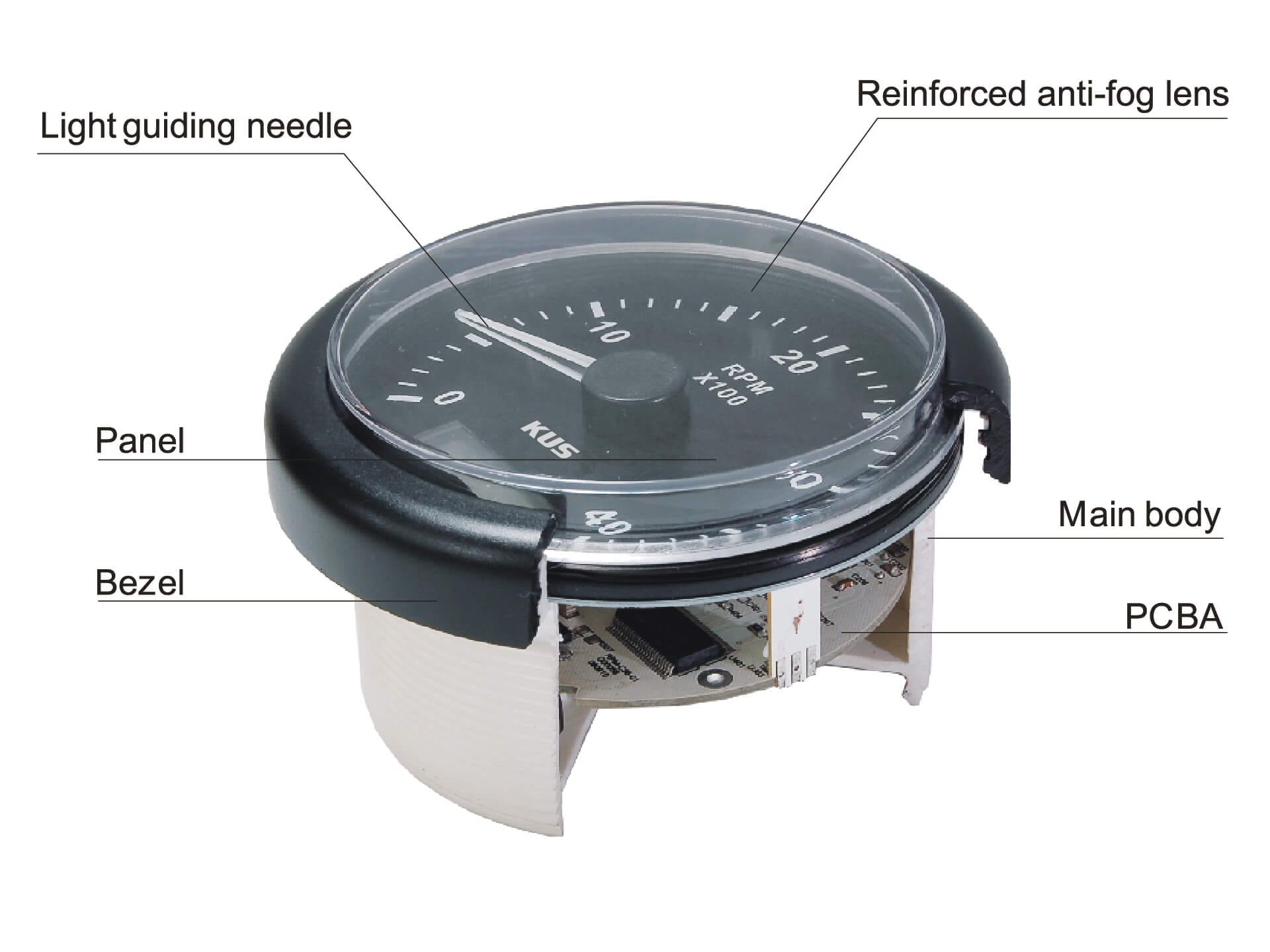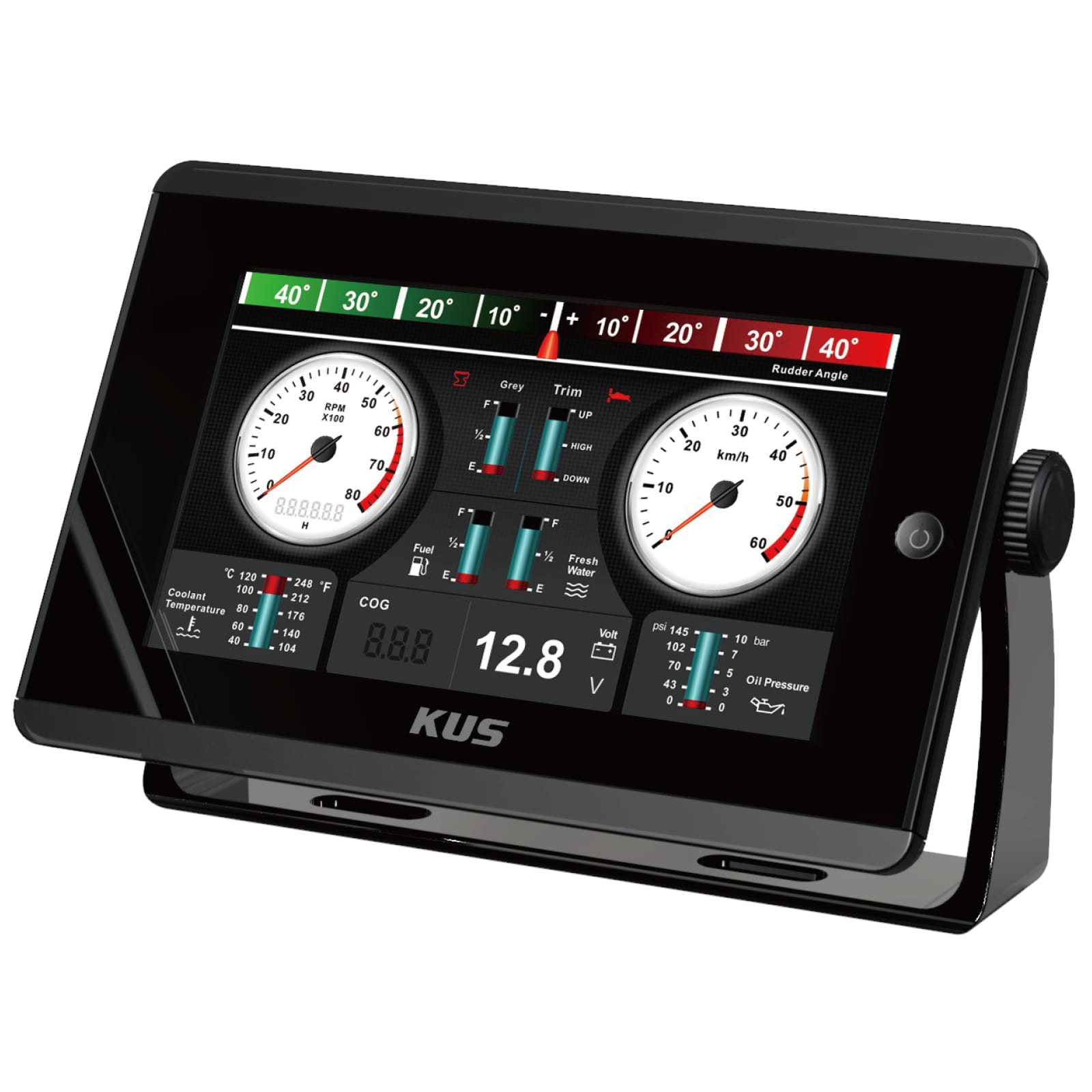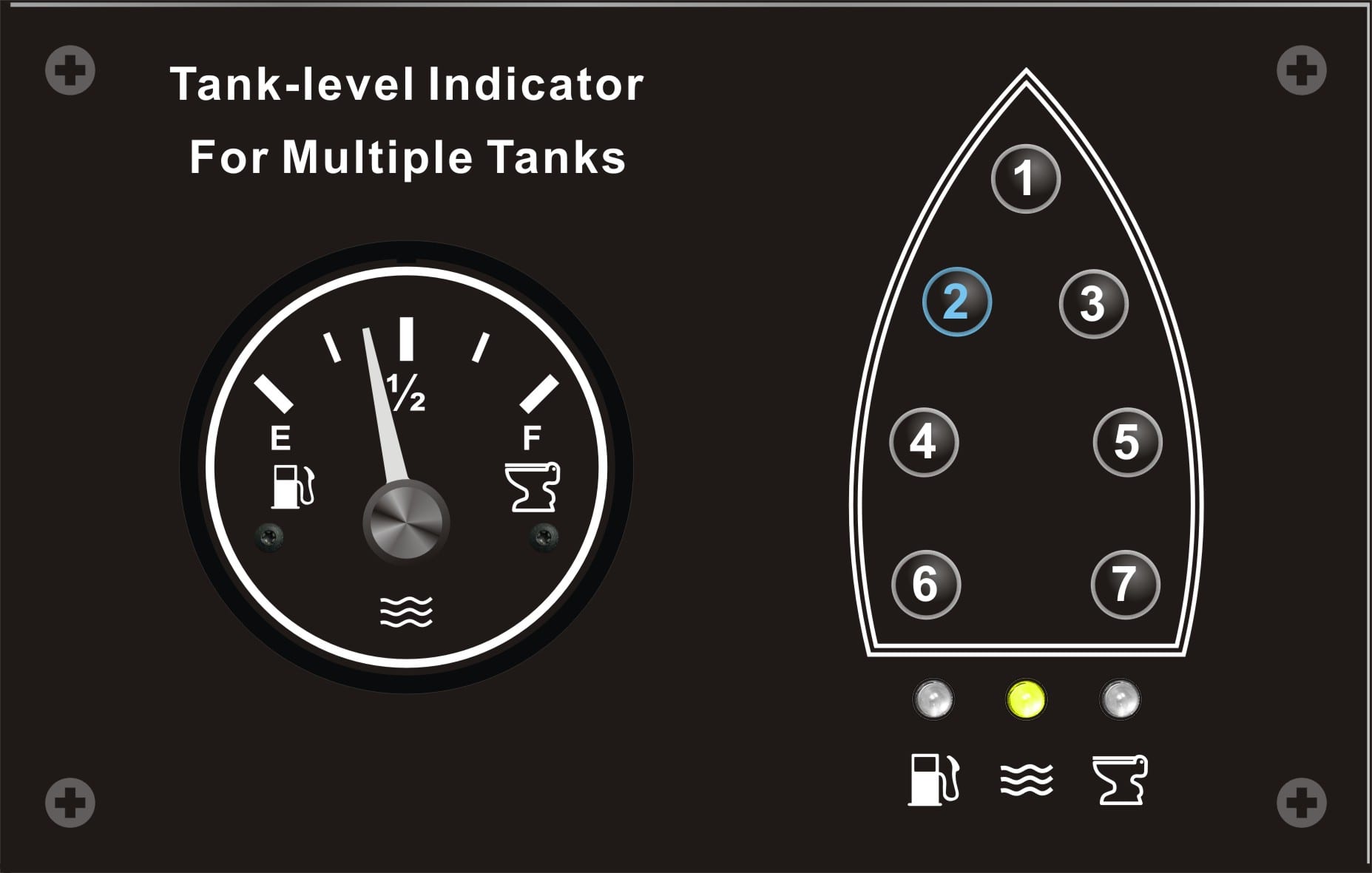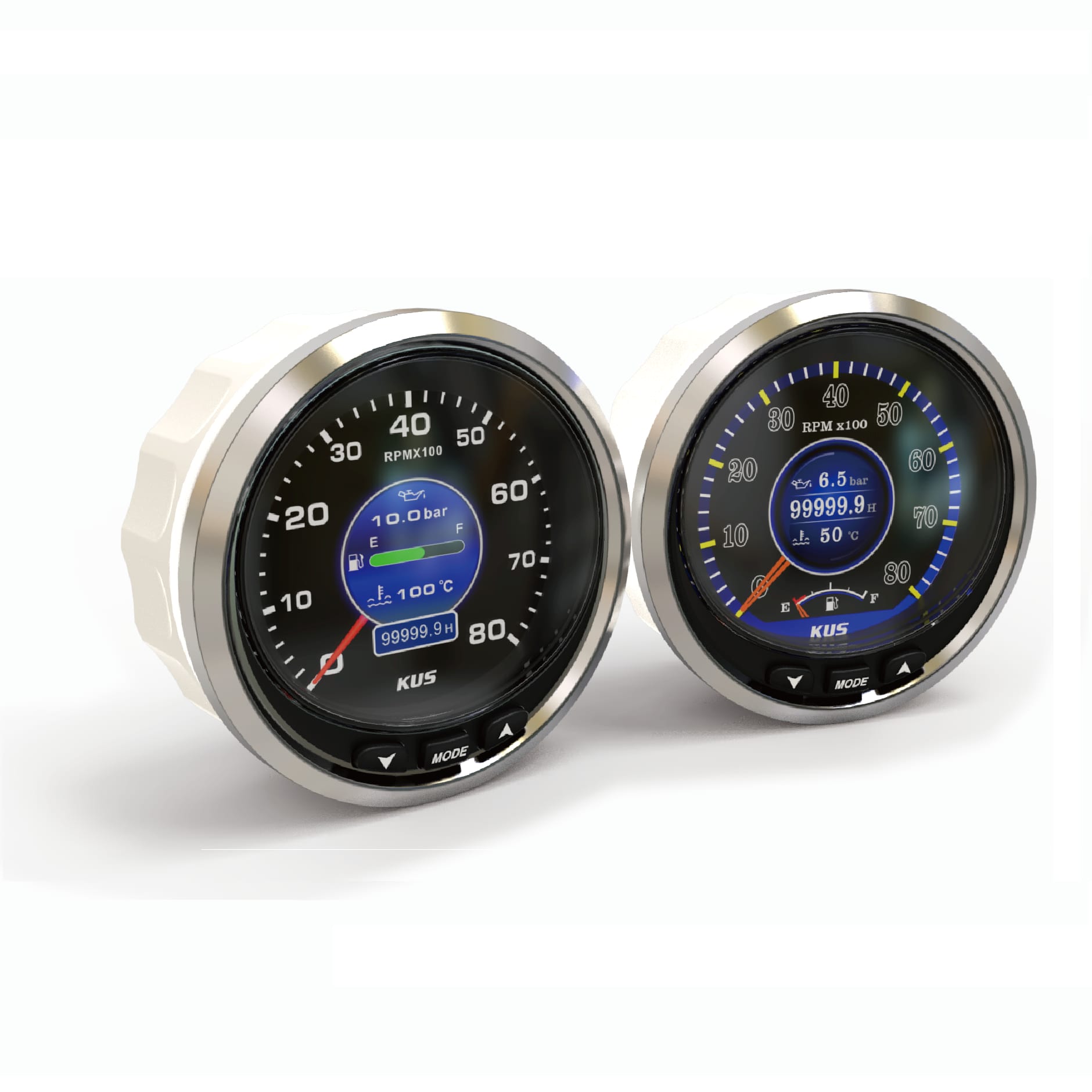GaugeInstrumentation
KUS is a world class manufacturer of gauge instrumentation components. Our products are installed on all types of marine, industrial, commercial, and power generation equipment. KUS sensors, gauges, and panels have been proven to meet the strict performance and quality requirements by industry-leading OEMs. We offer a line-up of high-quality standardized products and can work with customers to design, validate, and manufacture custom solutions.
Analog Gauge
KUS analog gauges are built to withstand the elements.
The gauge bodies are IP67 rated with anti-fogging and scratch resistant lens cover; this means they can withstand the harshest environments on the water, or out in the field.
The clean dial face designs are backlit by long-lasting LED lights, making it easy to read at night or under the sun’s glare.
Digital Gauge (NMEA 2000, CANBUS, J1939)
As modern boats and equipment advance, it is more important than ever to be able to monitor their performance accurately. KUS-manufactured gauge instrumentation and panels can read the digital, CanBUS, or J1939 signals and let the users know how the system performs.
These gauges and panels are designed as a simple plug-n-play, and require only a simple connection to the digital network without any extraneous setup.
Gauge Panel
Gauge panels allow the user to monitor multiple liquid levels across tanks without the need for multiple gauges, thereby saving precious dashboard space and eliminating clutter.
NMEA 2000 Certified Gauges
NMEA 2000 network is a Controller Area Network (CAN) bus technology that is becoming the industry standard in the marine industry for boats and yachts of all sizes. It is a plug-and-play network with no master nodes to configure, and can support hot swappable devices.
KUS offers marine gauge instrumentation and devices that are certified by NMEA for the NMEA 2000 network. Designed as a plug-and-play device, all you have to do is connect the instrumentation and devices to the NMEA 2000 backbone and you are ready to go.





